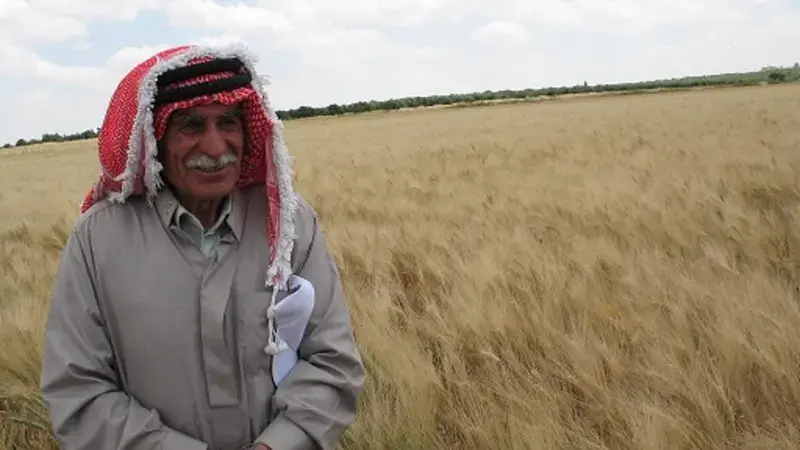Improved wheat production packages prove their worth

Future global food security is dependent on advances in crop science and the development of improved crop varieties. The ‘Enhancing Food Security in Arab Countries’ initiative is therefore developing, testing and disseminating high-yielding wheat varieties which demonstrate the potential to overcome the region’s production constraints – intense heat, prolonged drought, rust disease, and a variety of other biotic and abiotic stresses.
In all participating countries, newly generated wheat lines with better-yielding ability were identified. Introduced alongside improved production packages – new technologies and proven agronomic practices – the varieties achieved yields that were, on average, 28 percent higher than conventional varieties and practices. Yield increases were achieved in rainfed, supplemental irrigation, and irrigation conditions.
The varieties have been developed and tested on demonstration plots and farmer fields, and their distribution to areas beyond the project sites could help to reduce the large and widening gap between wheat supply and demand, which increases regional food insecurity and exposes consumers to the vagaries of export markets.
The performance of improved wheat varieties and production packages in national programs:
- In Algeria, under rainfed conditions, yield levels for promising bread and durum wheat lines exceeded 6 tons per hectare (6 t/ha). Four bread and 4 durum wheat lines were also released over the past three years, and as a result of a nationwide effort to boost wheat production, improved varieties now cover 10 percent of the country’s wheat producing area.
- In Egypt, the average increase in grain yield achieved by the introduction of improved varieties and production packages was 25 percent.
- In Iraq, several promising wheat lines were tested in advanced yield trials under irrigated conditions, generating 6-7 t/ha. Some of these varieties were subsequently considered for release. One improved variety promoted by the initiative – Bohouth 22 – is now being disseminated by the Iraqi government to all extension centers for distribution to farmers.
- In Jordan, improved wheat varieties raised yields by 10-12 percent, generating produce worth an estimated 207,000 USD in 2012/13, and 164,000 USD in 2013/14. Several wheat lines developed by the initiative’s Egyptian program have adapted well to rainfed conditions in Jordan - some have exceeded the grain yield of the local check, Hourani, by up to 25 percent.
- In Sudan, land devoted to the cultivation of improved varieties has grown considerably over the course of the past four years. Heat-tolerant varieties with good bread-making qualities and resistance to rust diseases have been prioritized. The heat-tolerant variety Imam, for instance, was adopted on 1418 ha in 2013/14 and 420 ha in 2012/13 – a significant increase from 20 ha in 2011/12.
- Economic impacts in Sudan have been impressive: estimates suggest that if the total area devoted to the production of improved varieties is managed according to best practices, an additional 110,500 tons of wheat could be produced, valued at over 56,100,000 USD.
- In Syria, Improved varieties and production packages have raised yields by 17 percent under rainfed conditions and 13 percent under supplemental irrigation.
- In Tunisia, under rainfed conditions over the past three growing seasons, the wheat variety Maali has produced an increase in wheat production of 1760 tons, worth approximately 615,000 USD.
- In Morocco, improved high-yielding, disease- and pest-resistant wheat varieties were tested, with several generating yields that exceeded 7 tons per hectare (t/ha). In project areas, 100 percent of participating farmers adopting the varieties, which are now being sown on 82 percent of the total wheat area.
- In Palestine, improved durum wheat varieties generated yields that were 13-25 percent higher than the preferred local variety, Anbar.
- In Yemen, the varieties Bohouth 13 and Saba’a achieved an overall yield increase of 50 percent when they were introduced alongside a package of recommended interventions: good quality seed, optimum seeding rates, well-reasoned fertilizer application, and better irrigation management.
